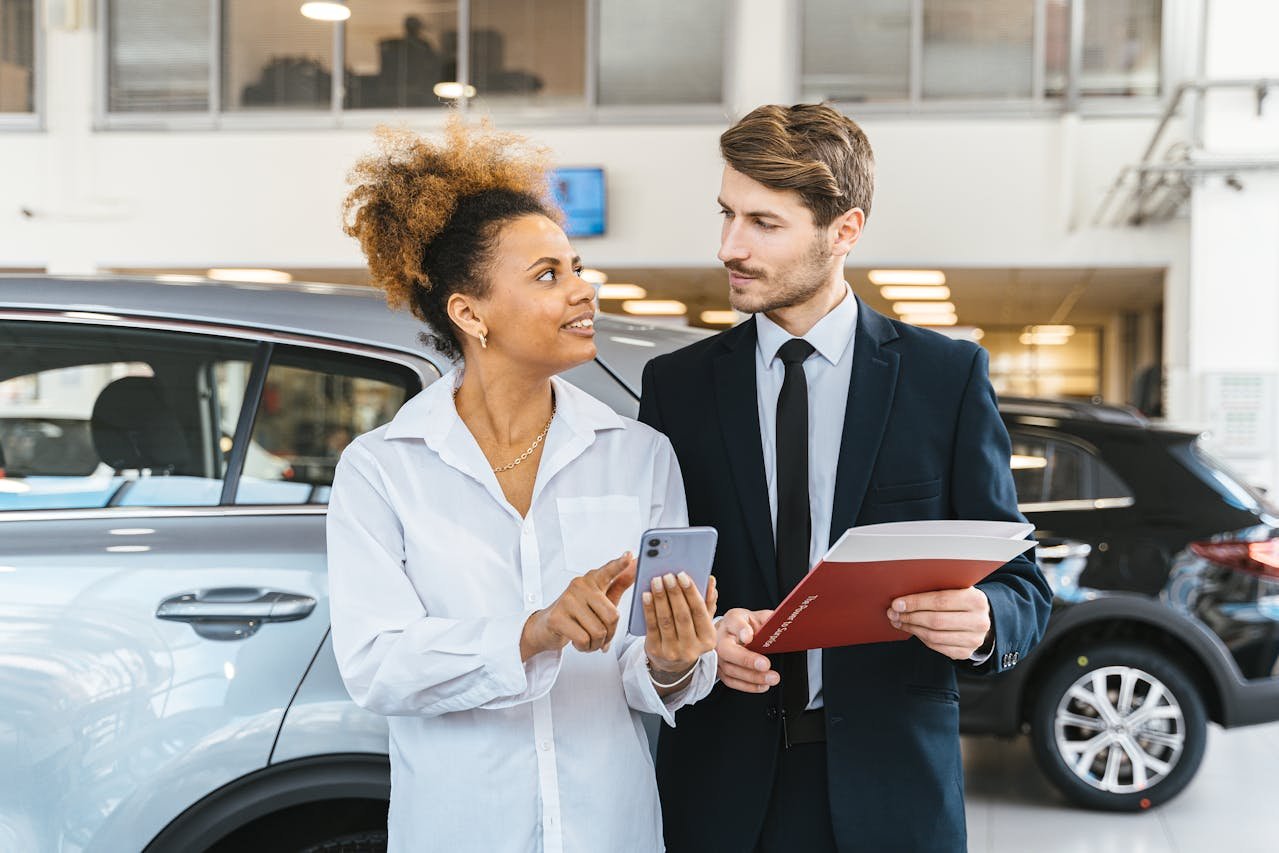The UK used car market is huge. In 2023 alone, over 7.8 million used cars were sold across the country. The market continued to show strength in Q2 2024, with a 7.2% increase in sales compared to the same period in 2023, indicating a growing demand for used cars.
Buying a used car has many benefits for drivers. Not only are the prices more competitive, meaning you can get a bargain or higher specification for your budget, but you can also benefit from someone having ironed out any manufacturing kinks that might have been present as new.
So, what exactly is a used car? Typically, it’s a vehicle with at least one previous owner and has more than just delivery miles on the clock. This could mean anything from a car 3 months old to one 13 years old and over. In simple terms, if you’re not the car’s first owner, you’re buying a used car.
As we mentioned, that isn’t necessarily a bad thing. What is bad when buying a used car is not doing your homework before committing to a purchase. And unlike new cars, used motors don’t always come with warranties. Private sellers, for example, likely won’t offer a warranty. Some dealerships can offer anything from a one-month to a 12-month one or give you the option to purchase a third-party warranty instead. However, car dealerships do have to take the car back and give you a full refund if requested if the vehicle is faulty within 30 days, so you do have this to fall back on if you make the wrong purchase.
But moving forward with your next used car purchase, what can you do to help limit the mistakes you could make and ensure you get the right car—one that meets your needs and budget and is reliable?
Not Checking MOT History
Did you know you can check the MOT status of all cars registered after 2005 on the gov. uk website? You can access all the MOTs from the first one by entering the registration number of the car you’re considering buying. This gives you a better idea of any work that has been carried out and what you might need to repair or replace during your ownership. It also provides insights into the car’s maintenance history and can help you identify potential issues that may arise in the future. Don’t just rely on the dealer’s or seller’s word; verify it yourself. It’s a quick and painless process that can help you make an informed decision.
Buying on Looks or for Clout
A common trap many people fall into is saying yes to a car because they want to give themselves some clout or compete with others with bigger or better cars. Or they simply like the way it looks. Aesthetics are an important part of the car you buy, but it should not be the sole reason you buy a used car. Glossing over common faults, ignoring warnings, etc., simply because you love that car or someone else has one that you want can be a fast track to disaster. So if you don’t want to find yourself with an amazing-looking car that isn’t worth the money you paid, don’t buy a car simply because your mate down the road has one and you want one too.
Not Checking Mileage
The mileage on the car is essential. You need to look at the age of the car and the miles it has covered in this time. A general rule of thumb is around 10,000 miles per year, so a car that is 10 years old with 100,000 miles will be average, but a 5-year-old car with the same mileage should give you cause for concern. A well-maintained car can last for up to 200,000 miles.
Of course, the fuel the car uses will also impact the decision concerning mileage. If you’re buying a petrol car, you will want the miles to be considerably lower for its age than a diesel. In addition, the MOT history (which should match the mileage on the clock) and the service and repair history can all indicate if the mileage will negatively impact the car and if it’s worth the investment.
Not Test Driving It
A car might look good on paper and is enticing on the forecourt, but if you’re snapping it up without taking it for a test run, you could potentially make a massive error. Even if it ticks all the boxes, you want to be sure that the car is a fit for your lifestyle and what you will be using it for. How does it drive? How do the pedals feel under your feet? How comfortable do you feel driving it? Take the car for a test drive in different locations, on a motorway or dual carriageway if you can, take it on narrow roads, around roundabouts, etc. and get a feel for how it will be day to day when you’re driving it because you need it to be comfortable and fit your lifestyle.
Buying The First Car You See
Jumping in and saying yes to the first car you see doesn’t give you a good advantage. Not only will you be unsure if the car is really right for you, but driving other cars allows you to get a feel for what else is out there and rule other cars out, too. You might also be missing out on better deals or models due to not shopping around.
Sure, the car might be gone if you take too long. However, it’s a good idea to shop around prior to putting your money down so you can at least get a representation of what is out there in your price range and what is a good fit for you. Even if you only sit in other models at the dealership or take a few out for a test drive before committing, don’t say yes to the first car you see. At the very least, try a few more cars; ideally, give it a few days first.
Paying the Asking Price
This isn’t the supermarket where you do your shopping, and you need to pay the price at the till. With car sales, it’s not just a done thing to haggle. It’s expected. Most car dealerships will have increased the prices slightly; they will be permitted to make offers or give discounts for sales. How much depends on the dealership, the car, the cost, how you’re paying, and the time of year. Is it close to the end of a quarter, or is a new registration plate coming out, so they need to shift pre-registered motors to make way for newer cars? But at the very least, you need to try your best to get a discount or a better offer than the one for the show on the forecourt. This might not work so well with private sales, but if you’re heading to a dealership like Listers Used Cars for your next vehicle, it’s worth seeing what offers you can take advantage of.
Not Paying Attention To The Full Cost
Some cars will cost more to buy upfront than others. Some will cost more to run and own more than others. While not all used cars are money pits, leading you to sink all of your friends into keeping them on the road, they will still have associated costs. Ignoring the very real cost of owning the car you want to buy can be a huge financial mistake.
This means considering the cost of the MOT, the annual service, road tax, insurance, the cost to fuel the car, the average cost of repairs, common faults, etc. It all adds up, and just because you can afford the upfront cost or the finance payments doesn’t mean the overall cost of the car while you own it will be as affordable.

